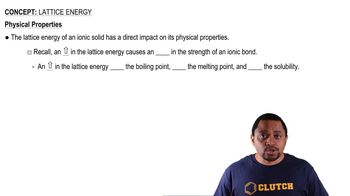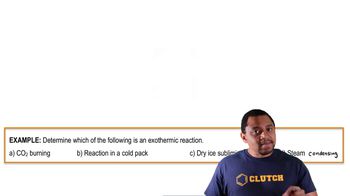When ammonium chloride dissolves in water, the solution becomes colder. (a) Is the solution process exothermic or endothermic?
(a) In Equation 13.1, which of the enthalpy terms for dissolving an ionic solid would correspond to the lattice energy? (b) Which energy term in this equation is always exothermic?
 Verified step by step guidance
Verified step by step guidanceKey Concepts
Lattice Energy

Enthalpy of Solution

Exothermic and Endothermic Processes

When ammonium chloride dissolves in water, the solution becomes colder. (b) Why does the solution form?
The first stage of treatment at the reverse osmosis plant in Carlsbad, California, is to flow the water through rock, sand, and gravel as shown here. Would this step remove particulate matter? Would this step remove dissolved salts?
[Section 18.4]
For the dissolution of LiCl in water, ∆Hsoln = -37 kJ/mol. Which term would you expect to be the largest negative number: ∆Hsolvent, ∆Hsolute, or ∆Hmix?
Two nonpolar organic liquids, hexane (C6H14) and heptane (C7H16), are mixed. (a) Do you expect ∆Hsoln to be a large positive number, a large negative number, or close to zero? Explain.
Two nonpolar organic liquids, hexane (C6H14) and heptane (C7H16), are mixed. (b) Hexane and heptane are miscible with each other in all proportions. In making a solution of them, is the entropy of the system increased, decreased, or close to zero, compared to the separate pure liquids?
